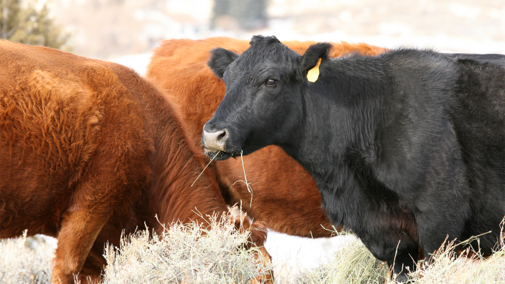Fall Fertilizing on Cornstalks Before Grazing
Is it safe to graze cornstalks or crop residue fields where fertilizer has been applied? For potential nitrate toxicity, there is some risk grazing crop residue soon after dry fertilizer was applied just a few days prior without a half inch of field moisture (rain or irrigation). Liquid nitrogen products are less likely to pose grazing toxicity, even without rain washing the fertilizer off the residue. However, urea spills or piles can increase consumption toxin risk.
Other fertilizer supplement nutrients like potassium, zinc and sulfur have at least some level of potential toxin, but the risk depends on consumption rate and total amounts consumed by grazing animals. Risk will be reduced if rainfall and snow melts flush the nutrients off the residue and into the soil.
Potassium can be toxic if consumption rates are higher than 3% of the diet or 30,000 mg/kg of intake, which is very unlikely. To lower this risk, consider offering a high magnesium mineral for the grazing animals, since high potassium intake can cause magnesium deficiency.
Also, although unlikely, downed corn grazing can increase polioencephalomalacia (PEM) risk due to high sulfur intake. Grazing cattle can tolerate 0.5% sulfur, and since corn residue usually only averages 0.1%, the risk of sulfur toxicity is also low.
Zinc consumption is acceptable up to 1000 mg/kg without problems, and phosphorus can be tolerated up to 1% of the diet.
Overall, the safest approach for grazing cornstalks is to wait until after a rain or graze before applying fertilizer to crop residue fields. Fertilizer application to growing cover crops will lower risk for grazing toxicity, since actively growing plants likely absorb the nutrients within a couple of days compared to dry fertilizer spread on crop residue.
More information is available on our UNL Extension websites: CropWatch and UNL Beef.
Alfalfa as a Supplemental Protein
Choosing the right protein may help bring the cost of feed down and more accurately meet the needs of our cattle. In some rations, alfalfa might be that choice.
Whether cattle are on winter range, cornstalks or being fed prairie/grass hay, they often will need extra protein in their diet. Protein sources vary in cost and effectiveness. Protein is important because it is used by the rumen microbes to help break down low quality forage and then used by the animal itself as microbial protein as they pass through the digestive tract. It’s essentially used twice.
Many times, alfalfa is one of the cheapest natural sources of protein. It’s easy to use and doesn’t require additional equipment. Non-protein sources of nitrogen, such as urea, may be cheap but won’t be as effective with low quality forage, as rumen microbes need additional energy to turn the urea nitrogen into protein the animal can use. Alfalfa hay, on the other hand, is highly digestible, feeding both the animal and rumen, often increasing consumption of low-quality feeds.
To be effective, alfalfa should be used as a supplement, not the whole diet, with only enough fed to overcome the deficit in protein the cow has from its current diet. A forage test, along with knowing the requirements of the class of animal you are feeding and consumption rate, can be used to determine just how much additional protein will be needed.
Some winter diets such as winter range, cornstalks or grass hay may require quite a bit of additional protein supplementation. While supplementing regularly may seem daunting, research has shown supplementing protein three times weekly is just as effective as daily supplementation as long as requirements are being met.
Feeding the right amount and choosing the right protein for your needs can save money. Alfalfa might just be the golden ticket.

